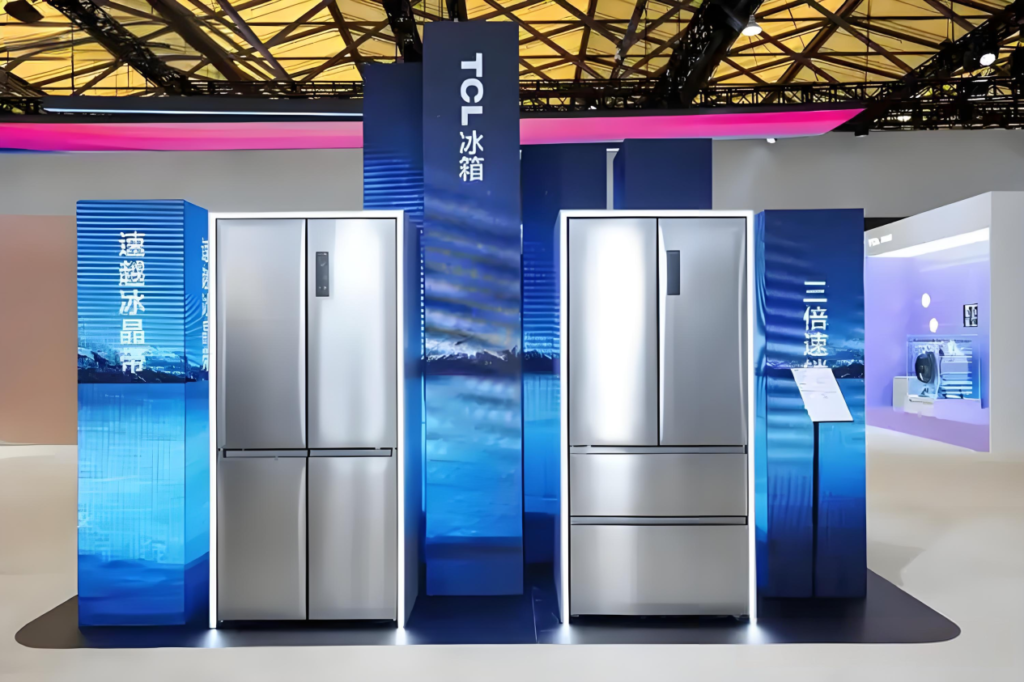
On October 15, data from China’s State Administration for Market Regulation showed that by the end of September 2025, the total number of consumer goods registered with product barcodes in China had reached 230 million varieties. In the first three quarters of this year, China registered 19.92 million new consumer goods with barcodes, a 31.4% year-on-year increase, involving 295,000 companies. This remarkable data not only demonstrates the continued prosperity of China’s consumer goods market but also provides a new window for observing the vitality of China’s economy.
Behind this growth is the result of China’s continuous innovation policies and accelerated industrial upgrading. In recent years, the Chinese government has successively introduced documents such as the “Guidelines for Accelerating the High-Quality Development of the Digital Economy” and the “Several Policies to Promote the Digital Transformation of Manufacturing,” which promote the deep integration of industrial chains, supply chains, and innovation chains, providing institutional guarantees for corporate innovation and injecting new momentum into the manufacturing industry. The rise in product barcode data is a vivid testament to China’s optimized supply system and improved innovation system. In the entire R&D, manufacturing, and distribution chain of enterprises, barcodes achieve a “marking—collection—sharing—traceability” closed-loop, which not only shortens new product R&D cycles and enables faster market responses but also allows innovation results to be more efficiently transformed into product increments and market momentum.
Driven by this policy and innovation environment, innovative products from various industries continue to emerge. In the home appliance sector, in 2025, China’s TCL Technology launched innovative products such as the “TCL Cold Pudding Refrigerator” and the “TCL AI Super Drum Washing Machine.” Haier also released the world’s first AIGC International Standard White Paper, deeply integrating artificial intelligence into its home appliance product system. Several of its AI home appliances will be showcased at the ongoing 138th China Import and Export Fair. Undoubtedly, China’s home appliance brands are continuing to transition toward “intelligence and greenness,” and the home appliance industry is moving from “function compliance” to “value upgrade.”
In the furniture sector, China’s innovation is equally active. At the 30th China International Furniture Fair, Jiangsu Weihang Furniture Co., Ltd. presented innovative home products such as smart bedside tables with hidden storage and wireless charging features, attracting the attention of buyers from many countries. According to the organizer’s data, the number of overseas visitors during the exhibition increased by 10.7% year-on-year, and buyers from countries along the “Belt and Road” showed significant growth. Xu Xiangnan, chairman of the China Furniture Association, stated that under the policies promoting product replacement, China’s furniture industry has huge potential for technological upgrades and international cooperation.
At the same time, the rapid rise of smart consumer products has also become a new engine driving China’s economic growth. Data shows that the total number of smart wearable products registered with barcodes in China has reached 181,000 varieties, involving 6,000 companies, including 29,000 types of smartwatches, 2,000 types of smart glasses, 122,000 types of smart earphones, and 28,000 types of smart wristbands. For example, as of the first half of this year, China’s smartwatch total sales reached 7.432 million units, a year-on-year increase of 62.7%. In the global market, China’s smartwatches performed equally well. According to the International Data Corporation (IDC) latest “Worldwide Wearable Device Market Quarterly Tracker,” China’s smartwatches reached a global shipment volume of 14.6 million units in Q2 2025, a 31.0% year-on-year increase, continuing to lead the global wearable market.
It is worth noting that the continuous growth in product barcode data not only reflects the strong vitality of China’s consumer goods market but also releases broader international spillover effects. As a global unified standard, product barcodes have become the “digital ID card” for Chinese manufacturing companies going global. According to data from the China Article Numbering Center, over 600,000 Chinese companies’ product information is now synchronized globally. Relying on the GS1 global unified coding system, the recognizability and efficiency of Chinese products in global supply chains have significantly improved, providing support for the more efficient integration of Chinese manufacturing into international markets. The unified identification reduces cross-border compliance and reconciliation costs and improves traceability and recall efficiency. Chinese and foreign companies collaborate efficiently under the same digital rules, further enhancing the resilience of regional industrial chains.
Based on the continued expansion of international standard applications, China is also actively promoting the deep integration of barcode systems with regional trade cooperation. Taking Yiwu, China, as an example, last year, the “Yi-Xin-Europe” China-Europe Railway Express operated 839 trains, transporting more than 140,000 standard containers, a year-on-year increase of over 10%. A large number of barcode-enabled products, such as clothing, daily necessities, and home appliances, reached over 230 cities in Europe through railway channels, bringing new opportunities in logistics, warehousing, and processing to countries along the route. At the same time, the China Article Numbering Center actively cooperated with ASEAN standardization organizations to promote the mutual recognition mechanism for product barcodes, helping China and Southeast Asian countries achieve “one-code access” on cross-border e-commerce platforms and promoting regional industrial chain coordination and supply chain optimization.
In the future, we have reason to believe that as China’s innovation system continues to improve, its open pattern continues to expand, and digital transformation deepens, the Chinese market will continue to show strong resilience and deep potential, making a continuous contribution of “Chinese power” to global economic recovery and sustainable development.
Information contained on this page is provided by an independent third-party content provider. Binary News Network and this Site make no warranties or representations in connection therewith. If you are affiliated with this page and would like it removed please contact [email protected]



Comments